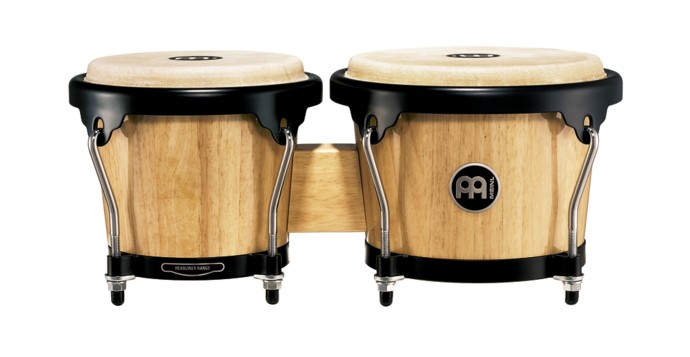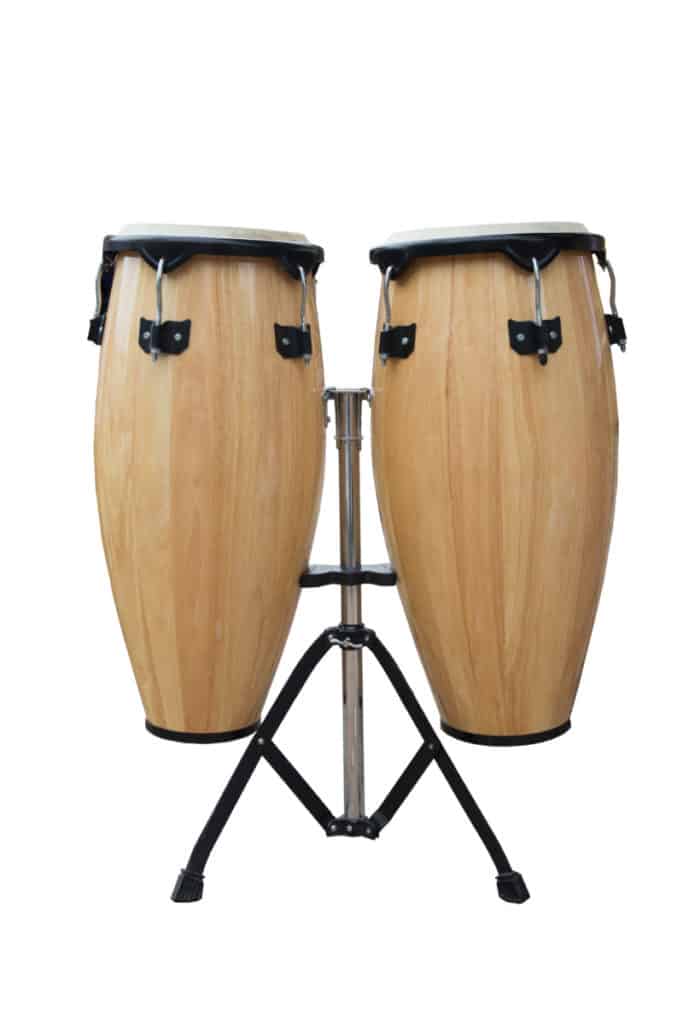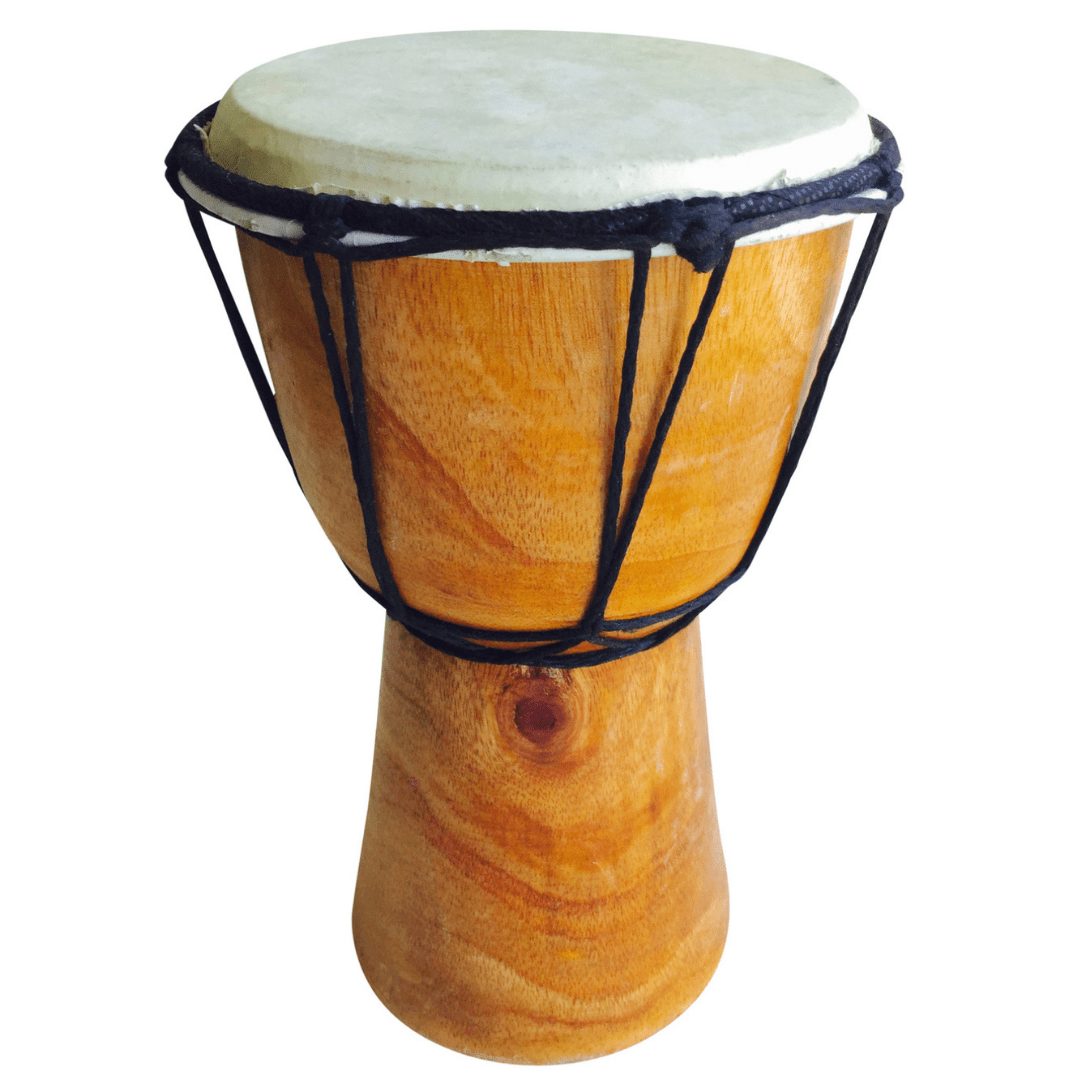A bongo drum is a percussion instrument. It comes in pairs of different sizes.
In the meantime, don't forget to unlock a world of unlimited sound with Amazon Music Unlimited, where over 100 million songs wait at your fingertips. Whether you're working, relaxing, or fueling your creativity, the right track is always just one tap away. Elevate every moment with music that moves you.
Originating from Cuba, bongos are essential in Latin music. They have a unique, lively sound. Many people are curious about bongo drums. They are small but create big rhythms. Their distinct tones make them stand out. Bongo drums are played with the fingers and palms.
This gives them a rich, varied sound. Their history is fascinating. Their role in music is vital. Understanding bongo drums can enhance your music experience. Let’s explore their features and significance.
Introduction To Bongo Drums
Bongo drums are a type of percussion instrument. They are small, open-bottomed drums played with hands. Typically, bongo drums come in pairs. One drum is smaller and called the “macho.” The larger one is called the “hembra.” These drums are known for their bright, sharp sound. They are popular in many music genres, especially Latin music.
Origins
The bongo drums have a rich history. They originated from Afro-Cuban culture. Their roots trace back to the 19th century. Slaves from Africa brought their drumming traditions to Cuba. Over time, these traditions evolved. The result was the bongo drums we know today. They became a key part of Cuban music.
Cultural Significance
Bongo drums hold cultural importance. They are vital in Latin music. They are often used in salsa, son, and Afro-Cuban jazz. Their rhythms drive the music. Bongo drums also symbolize cultural heritage. They connect people to their roots. They are more than just instruments. They are a link to history and tradition.

Credit: en.wikipedia.org
Anatomy Of Bongo Drums
The bongo drum is a popular percussion instrument. It consists of two small drums attached to each other. These drums produce a rich, resonant sound that adds depth to musical compositions. Understanding the anatomy of bongo drums helps appreciate their unique features and sound.
Materials Used
Bongo drums are made from various materials. The body is often crafted from wood. Common woods include oak, mahogany, and cedar. These woods offer durability and a warm tone. The drumheads are usually made of animal skin. Cowhide and goatskin are popular choices. Synthetic materials are also used for drumheads. They provide consistency in sound and are less affected by weather changes.
Parts Of The Drum
Bongo drums have several key parts. The shell is the main body of the drum. It is hollow and cylindrical. The bearing edge is the top rim of the shell. It supports the drumhead. The drumhead is stretched over the bearing edge. It is the surface that is struck to produce sound. The lugs are metal pieces that hold the drumhead in place. They are adjusted to tune the drum. The tuning lugs and rods help maintain tension on the drumhead. Finally, the two drums are connected by a wooden bridge. This bridge keeps the pair stable and aligned.
How Bongo Drums Are Made
Bongo drums are a fascinating percussion instrument. They are known for their rich, vibrant sound. Understanding how they are made can deepen your appreciation for these drums.
Crafting Process
The crafting process of bongo drums is intricate. It starts with selecting the right wood. Common woods include oak, ash, and mahogany. These woods are preferred for their durability and acoustic properties.
The wood is then cut into two drum shells. One shell is larger than the other. The shells are sanded smooth to avoid splinters. Next, the shells are hollowed out to create the drum bodies.
The drum heads are usually made from animal skins. Cowhide is a popular choice. The skins are stretched over the drum shells and secured with metal hoops. This step requires skill and precision to ensure a tight fit.
Traditional Methods
Traditional methods of making bongo drums are still used today. These methods have been passed down through generations. The process often involves handmade tools and techniques.
Artisans carefully select and prepare the wood. They use chisels and hammers to shape the drum shells. Attention to detail is crucial. Even small imperfections can affect the drum’s sound.
The drum heads are traditionally sun-dried. This natural drying process helps achieve the right tension. The skins are then soaked in water to make them pliable. They are stretched over the drum shells while still wet.
Once the skins are in place, they are left to dry. As they dry, they shrink and tighten, creating a perfect drum head. This traditional method ensures each drum has a unique sound.
Playing Techniques
Learning to play the bongo drum can be an exciting journey. This instrument has a rich history and diverse playing techniques. In this section, we will explore some essential ways to play the bongo drum. We will start with basic strokes and then move on to advanced rhythms.
Basic Strokes
The foundation of playing the bongo drum lies in mastering the basic strokes. These strokes include the open tone, the muffled tone, and the slap. Each stroke has its own unique sound and use.
- Open Tone: Use the pads of your fingers. Strike the drumhead near the edge. This creates a clear, resonant sound.
- Muffled Tone: Keep your fingers on the drumhead after striking. This produces a muted, controlled sound.
- Slap: Use the tips of your fingers. Hit the drumhead quickly. This results in a sharp, high-pitched sound.
Practice these strokes regularly. It is essential to develop muscle memory and precision. Consistent practice will lead to improvement in your playing skills.
Advanced Rhythms
Once you have mastered the basic strokes, you can move on to advanced rhythms. These rhythms add complexity and depth to your playing. They are often used in various musical genres, including Latin and jazz.
- Martillo: This rhythm is the backbone of many bongo patterns. It involves a combination of open tones, slaps, and muffled tones. The Martillo creates a steady, flowing beat.
- Bolero: This is a slower, more romantic rhythm. It uses softer strokes and a gentle tempo. The Bolero is perfect for ballads and slower songs.
- Guaguancó: This rhythm is complex and fast-paced. It requires quick hand movements and precise timing. The Guaguancó is often used in Afro-Cuban music.
Studying and practicing these rhythms will greatly enhance your bongo playing. It will allow you to play a variety of musical styles and impress your audience.
Remember, patience and dedication are key. Practice regularly and enjoy the process of learning and improving your bongo drum skills.
Famous Bongo Drum Players
The bongo drum, a pair of small hand drums, has become a staple in various music genres worldwide. Over the years, many talented musicians have showcased their skills on the bongo drum. These famous players have helped popularize the instrument and influenced countless others to take it up.
Historical Figures
Some early bongo drum players left a lasting impact on the music world. Their contributions continue to inspire musicians today.
- Candido Camero – A Cuban-born percussionist, Candido is one of the pioneers of Afro-Cuban jazz. He introduced the bongo drum to mainstream jazz.
- Mongo Santamaria – Another Cuban legend, Mongo blended traditional Afro-Cuban rhythms with jazz, creating a unique sound. His bongo solos are still revered.
- Armando Peraza – Known for his work with Santana, Armando was a master of many percussion instruments, including the bongo drum.
Modern Musicians
Today’s bongo drum players continue to innovate and captivate audiences. They build on the legacy of their predecessors.
- Giovanni Hidalgo – A Puerto Rican virtuoso, Giovanni is known for his incredible speed and creativity on the bongo drum.
- Eddie Montalvo – A well-respected figure in the salsa music scene, Eddie has played with many famous bands and artists.
- Pedrito Martinez – This Cuban percussionist has gained fame for his dynamic performances and skillful bongo playing.
These musicians, both past and present, have significantly shaped the world of bongo drumming. Their passion and talent continue to inspire new generations of players.

Credit: www.northwestphysicians.com
Bongo Drums In Music
Bongo drums, also called bongos, are small, hand-played drums. They have a unique, high-pitched sound. This sound makes them popular in various music genres. Bongos usually come in pairs, with one drum larger than the other. The smaller drum is called the “macho,” and the larger one is the “hembra.” They add rhythm and excitement to music.
Genres
Bongo drums are versatile. They are used in many music genres. In Latin music, bongos are essential. They feature in salsa, mambo, and son cubano. These drums also appear in Afro-Cuban music. Jazz musicians love bongos too. They add a unique flair to jazz. Bongos are also found in world music. Many cultures use bongos in traditional songs.
Popular Songs
Many popular songs feature bongo drums. “Oye Como Va” by Tito Puente is a famous example. This song showcases the bongo’s rhythm. Another song is “The Girl from Ipanema.” It features soft bongo beats. “Sympathy for the Devil” by The Rolling Stones also uses bongos. The drums add a tribal feel to the song. These songs highlight the bongo’s versatility.
Choosing The Right Bongo Drums
Choosing the right bongo drums can be challenging. With many options available, it’s essential to understand what fits your needs. Below, you’ll find tips for beginners and advice for professionals. This guide will help you make an informed decision.
Beginner Tips
Beginners should focus on a few key factors:
- Size: Smaller drums are easier to handle.
- Material: Wood and fiberglass are common materials.
- Price: Entry-level bongos are affordable.
Consider these elements when selecting your first set. Comfort and ease of play are crucial for new players. Avoid overly expensive models. They may not offer significant benefits for beginners.
Professional Advice
Professionals have different needs. Advanced players should focus on:
- Sound Quality: High-quality materials produce better sound.
- Durability: Opt for well-constructed drums.
- Brand Reputation: Established brands often offer better products.
Professionals often perform live. Therefore, reliable and durable bongos are essential. Consider investing in a high-end model for the best performance.
Here is a comparison table for quick reference:
| Feature | Beginners | Professionals |
|---|---|---|
| Size | Small | Varied |
| Material | Wood/Fiberglass | High-quality Wood |
| Price | Affordable | Higher |
| Sound Quality | Basic | Superior |
| Durability | Standard | High |

Credit: growingkind.com.au
Caring For Bongo Drums
Bongo drums are beautiful and sensitive instruments. Proper care keeps them in good shape and ensures they produce the best sound. Below are some essential tips for maintaining and repairing your bongo drums.
Maintenance Tips
Regular maintenance of your bongo drums is vital. Here are some tips:
- Keep them clean: Use a soft, dry cloth to remove dust and dirt.
- Avoid moisture: Water can damage the drum skin and wood.
- Store properly: Keep them in a cool, dry place.
- Check tuning: Regularly check and adjust the tuning lugs.
- Use drum bags: Protect your drums during transport with padded bags.
Repair Techniques
Sometimes, bongo drums need repairs. Here are some common techniques:
- Replacing drumheads: Remove the old head, then fit and tighten the new one.
- Fixing cracks: Use wood filler for minor cracks. For major damage, consult a professional.
- Tightening lugs: Use a drum key to tighten loose lugs.
Taking care of your bongo drums ensures they last longer and sound better. Follow these tips and techniques to maintain and repair your drums with ease.
Frequently Asked Questions
What Is A Bongo Drum?
A bongo drum is a percussion instrument consisting of two small, connected drums. They are typically played with the hands.
How Do You Play Bongo Drums?
To play bongo drums, strike the drumheads with your fingers and palms. Different techniques produce various sounds.
What Materials Are Bongo Drums Made From?
Bongo drums are usually made from wood, with drumheads crafted from animal skin or synthetic materials.
What Is The Origin Of Bongo Drums?
Bongo drums originated in Cuba in the late 19th century. They are commonly used in Afro-Cuban music.
Conclusion
Bongo drums are fascinating instruments with a rich history. They bring vibrant rhythms to many genres. Their unique sound adds depth to musical compositions. Learning to play bongos can be fun and rewarding. Whether a beginner or a seasoned musician, bongos offer endless possibilities.
They are portable, making them perfect for jam sessions. Explore the world of bongo drums and discover their charm. Enjoy the journey of creating music with these versatile drums. Dive into the beat and let your creativity flow.
{ “@context”: “https://schema.org”, “@type”: “FAQPage”, “mainEntity”: [ { “@type”: “Question”, “name”: “What is a bongo drum?”, “acceptedAnswer”: { “@type”: “Answer”, “text”: “A bongo drum is a percussion instrument consisting of two small, connected drums. They are typically played with the hands.” } } , { “@type”: “Question”, “name”: “How do you play bongo drums?”, “acceptedAnswer”: { “@type”: “Answer”, “text”: “To play bongo drums, strike the drumheads with your fingers and palms. Different techniques produce various sounds.” } } , { “@type”: “Question”, “name”: “What materials are bongo drums made from?”, “acceptedAnswer”: { “@type”: “Answer”, “text”: “Bongo drums are usually made from wood, with drumheads crafted from animal skin or synthetic materials.” } } , { “@type”: “Question”, “name”: “What is the origin of bongo drums?”, “acceptedAnswer”: { “@type”: “Answer”, “text”: “Bongo drums originated in Cuba in the late 19th century. They are commonly used in Afro-Cuban music.” } } ] }As an Amazon Associate, Cleanestor earns from qualifying purchases at no additional cost to you.

